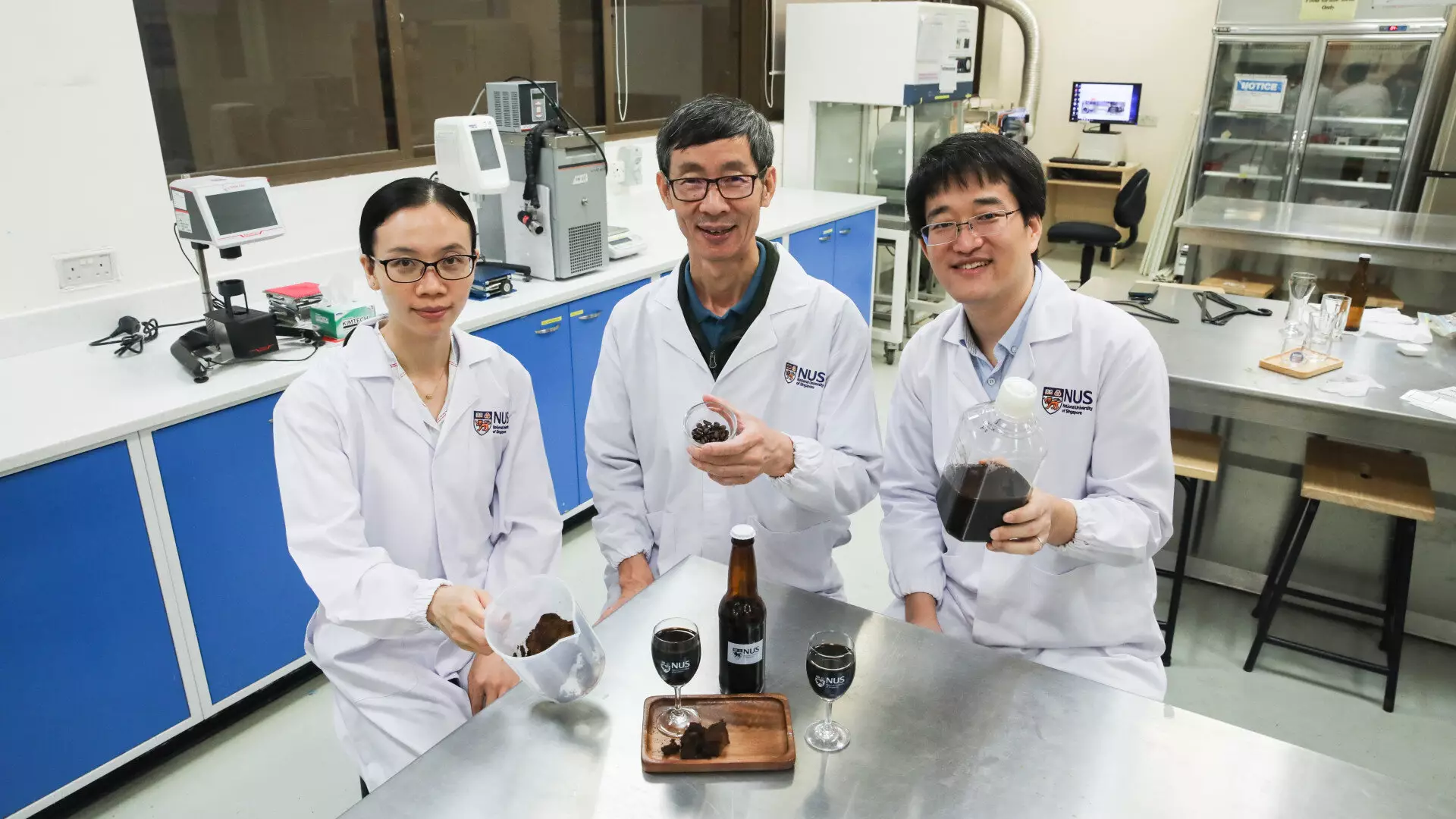Spent coffee grounds (SCG) are a significant waste product generated from coffee consumption worldwide. With approximately 6 million metric tons of waste produced annually, finding sustainable ways to manage this waste is crucial. Scientists and researchers are now exploring innovative methods to convert SCG into value-added products for a variety of applications. Associate Professor Liu Shao Quan and his team from the NUS Department of Food Science and Technology have taken a unique approach by creating alcoholic beverages from fermented SCG as a means of sustainable waste management.
To create the SCG-derived alcoholic beverages, the researchers first prepared SCG hydrolysates, which were then fermented using a combination of microorganisms, including yeasts. Yeasts play a fundamental role in determining the taste and aroma of the final product by influencing its chemical composition and quality. Unlike traditional alcoholic beverages made using Saccharomyces yeasts, the team explored non-Saccharomyces yeasts to discover novel flavors and characteristics for the SCG-derived alcoholic beverages. Their study, published in the journal LWT in 2021, showcased the use of two types of yeasts supplemented with yeast extracts to achieve a complex flavor palette.
Following this study, the research team continued to experiment with other microorganisms, such as lactic acid bacteria, to improve the smell and taste of the SCG-derived alcoholic beverage. They combined a yeast known as Lachancea thermotolerans with a lactic acid bacterium called Lactiplantibacillus plantarum to ferment SCG hydrolysates. This fermentation method resulted in alcoholic beverages with different alcohol contents and physicochemical profiles and higher levels of compounds associated with a pleasant aroma and taste compared to fermentation using only yeast. The findings of this fermentation strategy were published in the journal Foods in 2023.
In their latest study, published in the journal Food Research International, the research team delved deeper into the fermentation strategy using a combination of yeast and lactic acid bacteria for fermenting SCG hydrolysates. They conducted a detailed metabolomic analysis using an advanced technique called liquid chromatography quadrupole time of flight mass spectrometry (LCQTOF-MS). This technique allowed them to obtain a comprehensive profile of the chemical compounds present in the fermented SCG.
The researchers identified that fermentation of SCG hydrolysates using both yeast and bacteria enhanced the presence of bioactive compounds associated with various health benefits. These compounds included those with anticancer, anti-inflammatory, and antimicrobial activities. This study marked the first time such an approach was used to determine the full chemical profile of SCG hydrolysates fermented with a combination of yeast and bacteria.
Dr. Liu Yunjiao, the first author of the recent study, shared that the team developed several prototypes of alcoholic beverages derived from SCG, each with unique flavor profiles. Some prototypes retained a distinct coffee flavor, while others achieved a pleasant flavor without a dominant coffee taste. Regardless of the flavor profiles, the tests conducted on all the prototypes confirmed the presence of compounds known to confer health benefits, such as alkaloids and phenolic acids.
The innovative approach of using SCG as a raw material for alcoholic beverage production not only contributes to sustainable waste management but also offers the potential for bioactive compounds that promote health benefits. The findings of this research shed light on the possibilities of repurposing waste into valuable products and serve as an inspiration for future endeavors in waste management and sustainable agriculture. By harnessing the potential of SCG, we can create a positive impact on the environment and explore new avenues for a circular economy.


Leave a Reply